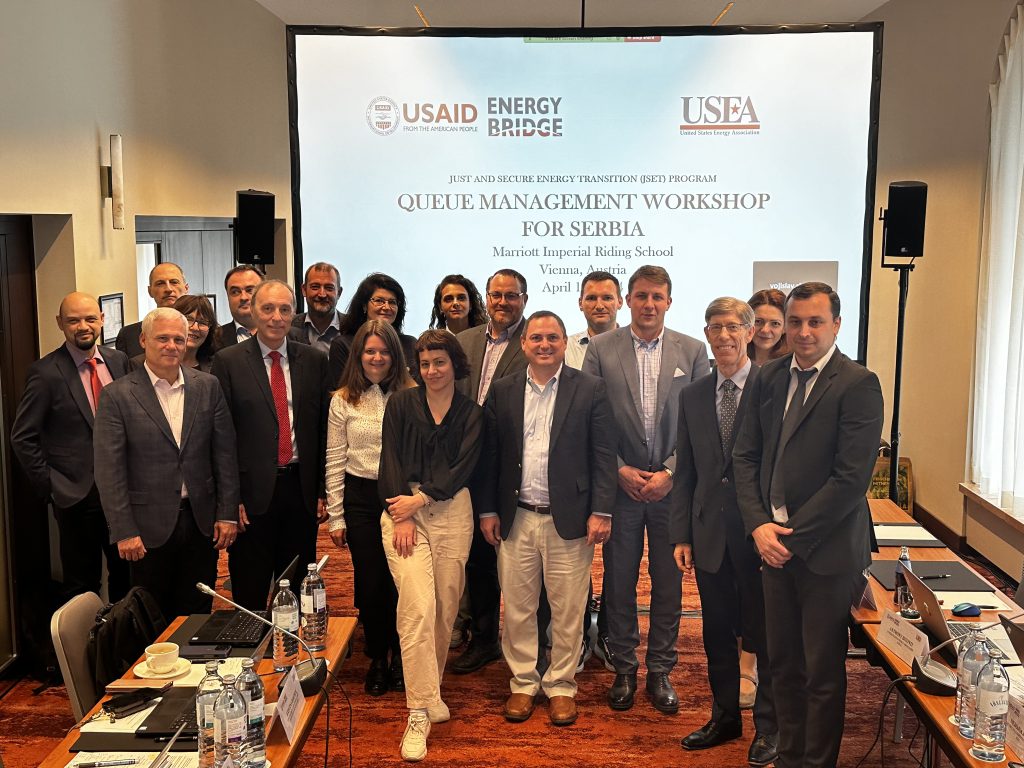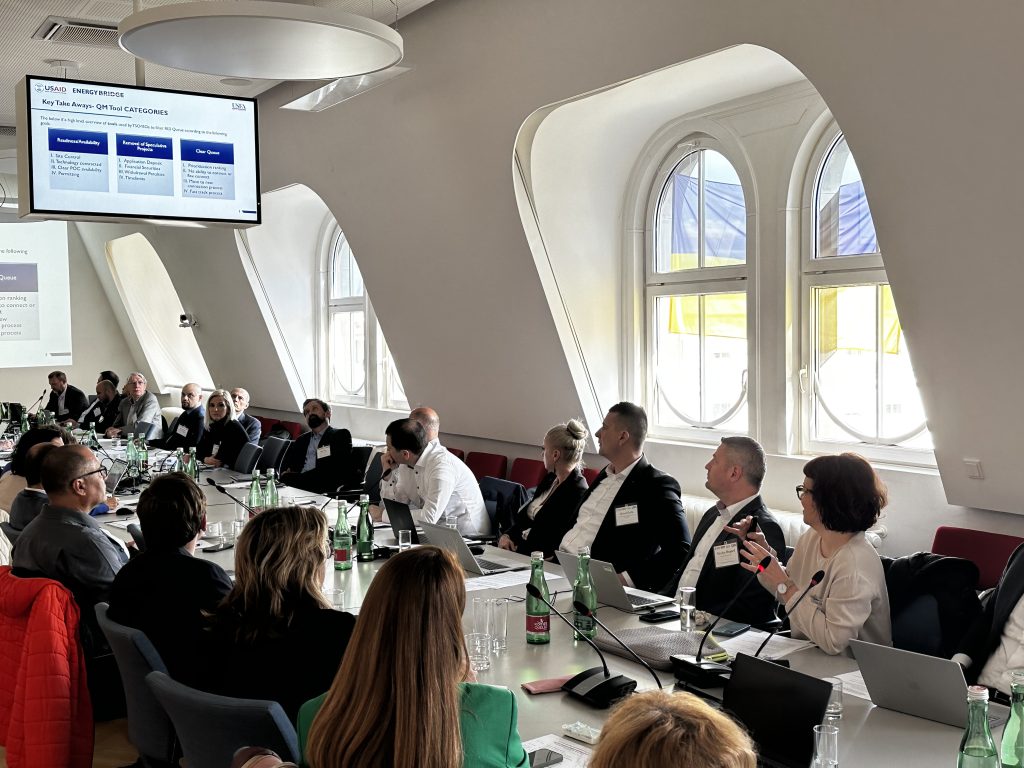
During a 2 day session held in Vienna this week, EGI supported USEA and its sponsor, USAID, in facilitating a discussion with TSOs and Regulators from Serbia on the topic of RES connection queue management (QM). Through EGI’s study on international best practices for QM, we laid the groundwork for fascinating discussions and collaborations on existing and possible tools that can be used to manage the significant RES connection queue that Serbia is facing.
On the second day, we were hosted by the Energy Community Secretariat, where we again kicked off the workshop by sharing our Study with the broader audience of EC members. Here we presented the 50Hertz connection approach and that of Elia, along with our colleagues from the US, who presented the SPP and MISO approach.
Our Elia colleague, Nicolas Bragard highlighted the collaborative concepts of Hosting Capacity Map and Flexible Connection agreements as possible solutions for connecting the new projects more quickly and reducing the connection queue. We once again had very interesting discussions and questions that showcased a clear need for tools to help manage the onslaught of RES applications coming to the TSOs in those regions.

This is not an isolated challenge for the TSO, so we had a chance to hear from the regulators and those dealing with the permitting process. It was clear that the need is pressing and that there is no ‘one size fits all’ solution, but there are existing tools for the QM approach that can be locally tailored and utilized to unlock the clean energy transition.
The workshop in Vienna highlighted the shared challenges of RES connection queue management. While different solutions would be required for a different context, sharing international best practices and existing tools is crucial. A collaborative framework is needed to steer the way for increased RES integration.
